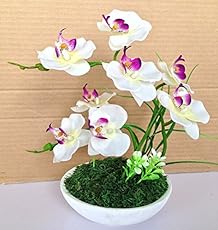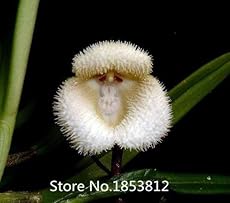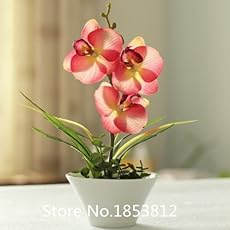
My plant growing “career” started in a small orchid nursery. I learned quickly what a display the Phalaenopsis can put on.
Today, the biggest bang for the buck – orchidwise – is the “Moth Orchid” the Phalaenopsis. Plus, they are not difficult to grow.
People view a phals as some sort of exotic, difficult to grow plant, when they really aren’t. Orchids have traditionally been grown by specialty growers, producing flowers for the florist trade or plants for the “collector”.
During the last few years more growers started to produce this select groups of orchids, in sufficient quantities. This commitment to grow these wonderful and attractive bloomers make these plants more available, and affordable.
Many nurseries, garden centers and grocery store now carry orchids on a regular basis. Some of this orchid “group” includes oncidiums, dendrobiums, and phalaenopsis.
Check the Video below for Some Buying Tips
As with most flowering plants orchids “show off” in their own blooming season.
Their blooming “season” naturally occurs during the months of December through May. When they hit the stores and before you go out an purchase one, here is some general care information.
General Moth Info
Growing Phals in your home can be rewarding and fun. They are particularly well suited for the conditions you already find at home (at least mine). Flowers of hybrids range in size from 2″ to nearly 5″ in diameter.
Colors range from white, pinks, lavender, yellow and even some oranges in both solid colors, mixes of stripes and spots. Many bold, new, color patterns are beginning to show up as well.
The flowers offer both exotic colors, forms and superb longevity. Individual blooms can last as long as 3 months. Flowers open sequentially at 2-5 day intervals along an arching spike.
Light For Your Orchid

In the home, Phals enjoy a spot near or in a bright window. You’ll want to avoid direct mid-day sun but early morning or late afternoon sun is great. An east or west facing window is ideal. In darker or cloudy environments a shaded southern window might be best.
If needed you can supplement normal light with a fluorescent grow light placed approximately 1 foot above your orchid.
Time your lights to simulate normal day length. If you have a home greenhouse you should consider using a heavy shade cloth (especially during the summer) to limit light levels to 1,000 – 1,500 foot candles.
Temperature
The ideal temperatures for the Phalaenopsis range between 55 and 85 F. For ideal growing try to maintain 60 at night and between 75 and 80 during the day.
Cool night time temperatures in the fall encourage flower spike initiation. However, once the flower spike is developed, wide swings in temperature can cause unopened buds to drop off. Temperatures in excess of 90 can slow growth.
Phals also benefit from moderate humidity levels. Ideal levels range between 50 and 75% relative humidity.
In a heated home you will want to set your plants on a shallow tray filled with gravel and water. This should help to keep the humidity near the plantat acceptable levels. Make sure the roots are NOT sitting in water.
Water
Moth orchids do not like to be dry to the point of wilting. When watering they should be watered thoroughly and then not again until the media is nearly, but not completely, dry.
How often you water will depend on the type of media your plant is growing in and its environment. Once every week to 10 days is a good starting point.
In winter, with the heat on in your home, lower humidity will mean you’ll water more frequently. Again, DO NOT let your plants dry to the point of wilting – it will really set them back.
Remember to not get any water on flowers as this will shorten their longevity.
Fertilizer
For convenience, a slow release fertilizer with equal proportions of N-P-K (14-14-14) used as directed, works well. However, most serious growers prefer to use a liquid plant food, again with equal parts of N-P-K, apply it at recommended rate every second time you water.
During blooming season you might consider a blooming plant formula with elevated phosphorus levels (i.e. 10-30-20). During winter months you can reduce liquid fertilizer applications to once a month.
I would recommend staying away from fertilizing even foliar feeding altogether while the plant is flowering.
Flowering
Their blooms have superb longevity. You can often urge a second flowering from each spike with a timely pruning.
When the last flower on the spike fades, you should examine the spike, looking for small fleshy bumps or nodes.
From the base of the spike count out 3 nodes (count only the green fleshy nodes – ignore any that are dried out). Cut the spike one inch above the third node.
If your plant is healthy and the season is not too late, this process will wake up one or two of the nodes and in a few short weeks it may produce a new spray of fresh blooms.
By trying this you could enjoy flowers for nearly 6 months of the year on the same plant.
Here’s a video on “Where to Cut the old flower spike”
Re-Potting
Phalaenopsis can live a very long time. That means you will have to know when and how to repot you plants.
There are two reasons plants need repotting. Either it has outgrown its current container or its media has decomposed and no longer is aerated well enough to maintain health roots.
Remove the plant from its container and let the old media fall away. Carefully trim away any old dead roots. Position the plant in its new container and pour in the new potting media, letting it settle around the roots.
Use an orchid media containing bark, stone, sphagnum moss, perlite or similar material that will provide right “root environment” and aeration needed for a healthy root system. Resume your normal watering and fertilizing schedule.
Many growers use sphagum moss as their media of choice. I’ve seen very good results using sphagnum, developing healthy, and vigorous root systems.
Pests
For controlling pests on phals, organic insecticides like neem oil is a natural solution that’s safe and an excellent solution to for the environmentally conscious house plant owner.
Phalaenopsis should be monitored for aphids, mealybugs, mites, scale, and slugs. These can usually be removed with a soft cloth and soapy water. If you choose to use a commercial pest control product, be sure to follow all label instructions.
There you have it, the basics to get started with the colorful Phalaenopsis Moth Orchid.
Image: source
- Share On Facebook0
- Twitter0
- Pinterest0
- Google+1
- Total: 1

For further information log on website :
https://plantcaretoday.com/how-to-care-for-phalaenopsis-moth-orchids.html











No comments:
Post a Comment